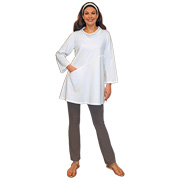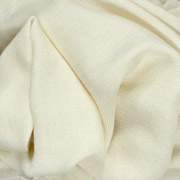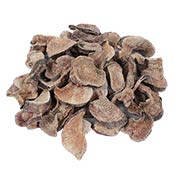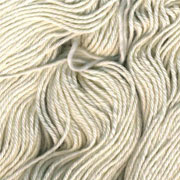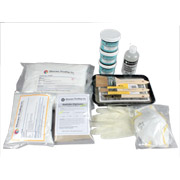

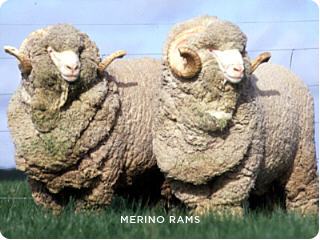 The process begins of course with the sheep themselves. There are many breeds of sheep but the most common sheep bred for wool are Merinos. Merino sheep originated in Spain and were once a highly guarded breed. This is because Merinos produce the finest, softest wool of all sheep, and in very large quantities. Now the largest population of Merinos are in Australia and New Zealand, where there is a ratio of about 4 sheep per person, more sheep than people!
The process begins of course with the sheep themselves. There are many breeds of sheep but the most common sheep bred for wool are Merinos. Merino sheep originated in Spain and were once a highly guarded breed. This is because Merinos produce the finest, softest wool of all sheep, and in very large quantities. Now the largest population of Merinos are in Australia and New Zealand, where there is a ratio of about 4 sheep per person, more sheep than people!
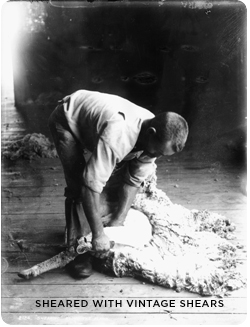 Shearing is the process of cutting the wool from the sheep. This is a big event on a ranch as there are a lot of sheep that need to see the barber. A top notch shearer can trim 200 sheep in a day and with very few second cuts. Second cuts result in lots of short bits of wool that have to be removed before spinning as they weaken the yarn. Shearers used to use handheld shears, but now they use electric trimmers with an automatic safety that protects the sheep and the shearer from getting cut. Shearing takes place once a year and the schedule depends on the local climate. You don't want naked sheep in the cold of winter!
Shearing is the process of cutting the wool from the sheep. This is a big event on a ranch as there are a lot of sheep that need to see the barber. A top notch shearer can trim 200 sheep in a day and with very few second cuts. Second cuts result in lots of short bits of wool that have to be removed before spinning as they weaken the yarn. Shearers used to use handheld shears, but now they use electric trimmers with an automatic safety that protects the sheep and the shearer from getting cut. Shearing takes place once a year and the schedule depends on the local climate. You don't want naked sheep in the cold of winter!
Once the wool is off the sheep it has to be skirted. Skirting involves throwing the fleece out on a table with spaced out slats. The throwing action causes the second cuts, bits of vegetation and other matter to fall through the slats. Next, any unwanted (rough, extra dirty, matted) bits of the fleece are removed and the fleece is set aside to be bundled up and sold to a mill. Because of the renewed interest in hand spinning and local fibers, many small sheep farms now sell fleece from many breeds directly to spinners, and you can often buy fleece right as it comes of the sheep's back!
Once wool has been skirted it needs to be properly scoured. Sheep naturally produce a waxy substance called lanolin that coats the fiber, making it water resistant and keeping it from drying out. Lanolin is a great moisturizer and is used by cosmetic companies in hand lotion. But when processing wool fiber the lanolin needs to be removed because it will gum up your equipment. Scouring is done by soaking the wool in lots of HOT water and strong detergent. Many hand spinners like to use Synthrapol for scouring detergent, due to its great de-greasing abilities. Mills scour wool with special washers, but you can do this at home in the washing machine, as long as you can stop the cycle before it starts agitating. It takes about 4-5 soaks in a home washer to get a fleece clean. Once it is clean the fleece is spread out to dry.
Carding is the next step, after which the wool will start to look like something that just might end up as yarn. Carding is the process of aligning the wool fibers so they are mostly parallel to each other. This insures the yarn will be smooth and strong. This step can be done by using hand carders, or it can be done with a large industrial carder with many different sized rollers.
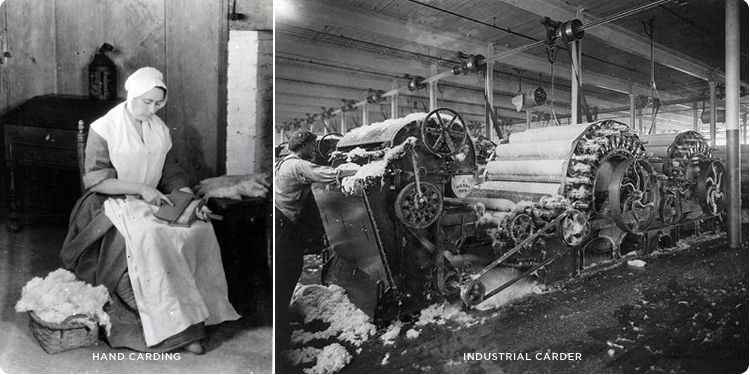
To card wool by hand, one carder is loaded up with clean wool. The metal teeth do a great job of holding the wool. Once the carder is full, the second carder is drawn over it with the teeth facing the opposite direction. The teeth of the second carder grab the wool and pull the fibers straight. With each pass, more wool is transferred to the second carder. When it is full, the wool is lifted off and re-applied to the first carder and you start again. Once the fiber is well carded you can use it to spin on a wheel or drop spindle to make yarn. Industrial spinning however, requires yet another phase.
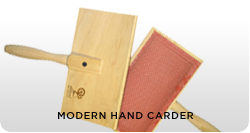 When wool is carded on an industrial carder it comes off in very large batts, big pillowy sheets of wool that are too bulky for spinning machines. It then needs to be drafted further into Top or Roving. The batts are put on a drawing machine that pulls the wool into more compact tops of roving. The top is coiled into cylindrical barrels so they can be taken to the spinning machines.
When wool is carded on an industrial carder it comes off in very large batts, big pillowy sheets of wool that are too bulky for spinning machines. It then needs to be drafted further into Top or Roving. The batts are put on a drawing machine that pulls the wool into more compact tops of roving. The top is coiled into cylindrical barrels so they can be taken to the spinning machines.
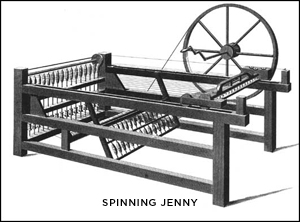 Spinning is the next step, where the roving finally becomes yarn that can be knitted or crocheted into a sweater. The roving is fed into the spinner which drafts (pulls) the roving even thinner until it reaches the flyer of the machine. Yarn is made by adding twist to the roving. This is done by the flyer which spins around the wool very quickly adding lots of twist. The first time the wool is spun it becomes a single. Singles are not very strong, so a finished yarn is generally 2-4 singles twisted together, a process called plying. A yarn with 3 singles twisted together is referred to as a 3-ply yarn. Spinning can be done by hand with a drop spindle, in fact this is how most yarn was made for hundreds, some say thousands of years. Spinning wheels came on the scene in Europe during the 17th-18th century and greatly increased production speed. The first multi-yarn spinner was the Spinning Jenny, developed in 1764 by James Hargreaves. It allowed one operator to spin 8 yarns at once. These days large electric spinners need little human help and one worker can manage multiple machines, each producing many yarns at a time.
Spinning is the next step, where the roving finally becomes yarn that can be knitted or crocheted into a sweater. The roving is fed into the spinner which drafts (pulls) the roving even thinner until it reaches the flyer of the machine. Yarn is made by adding twist to the roving. This is done by the flyer which spins around the wool very quickly adding lots of twist. The first time the wool is spun it becomes a single. Singles are not very strong, so a finished yarn is generally 2-4 singles twisted together, a process called plying. A yarn with 3 singles twisted together is referred to as a 3-ply yarn. Spinning can be done by hand with a drop spindle, in fact this is how most yarn was made for hundreds, some say thousands of years. Spinning wheels came on the scene in Europe during the 17th-18th century and greatly increased production speed. The first multi-yarn spinner was the Spinning Jenny, developed in 1764 by James Hargreaves. It allowed one operator to spin 8 yarns at once. These days large electric spinners need little human help and one worker can manage multiple machines, each producing many yarns at a time.
Now, you may be asking, when do they dye the wool? This is Dharma after all! There are several points at which the wool could be dyed, depending on the effect that is desired in the finished yarn. First, the wool fleece can be dyed after scouring, then multiple colors can be carded together to make tweedy heather yarns. The roving could also be dyed, and two different colors could be spun and plyed together to make bi-color polled yarns, much like a candy cane. Finally, the yarn itself can be dyed to get solid or self striping effects.
With our big selection of un-dyed yarns and rovings and Dharma Acid Dyes (for wool or silk) or Dharma Fiber Reactive Dyes (for cotton, bamboo, hemp and other plant fibers), you can do any of the above to make your own unique yarns and roving blends for knitting, crochet and felting upscale, one of a kind products like you see in the finest boutiques or galleries!




